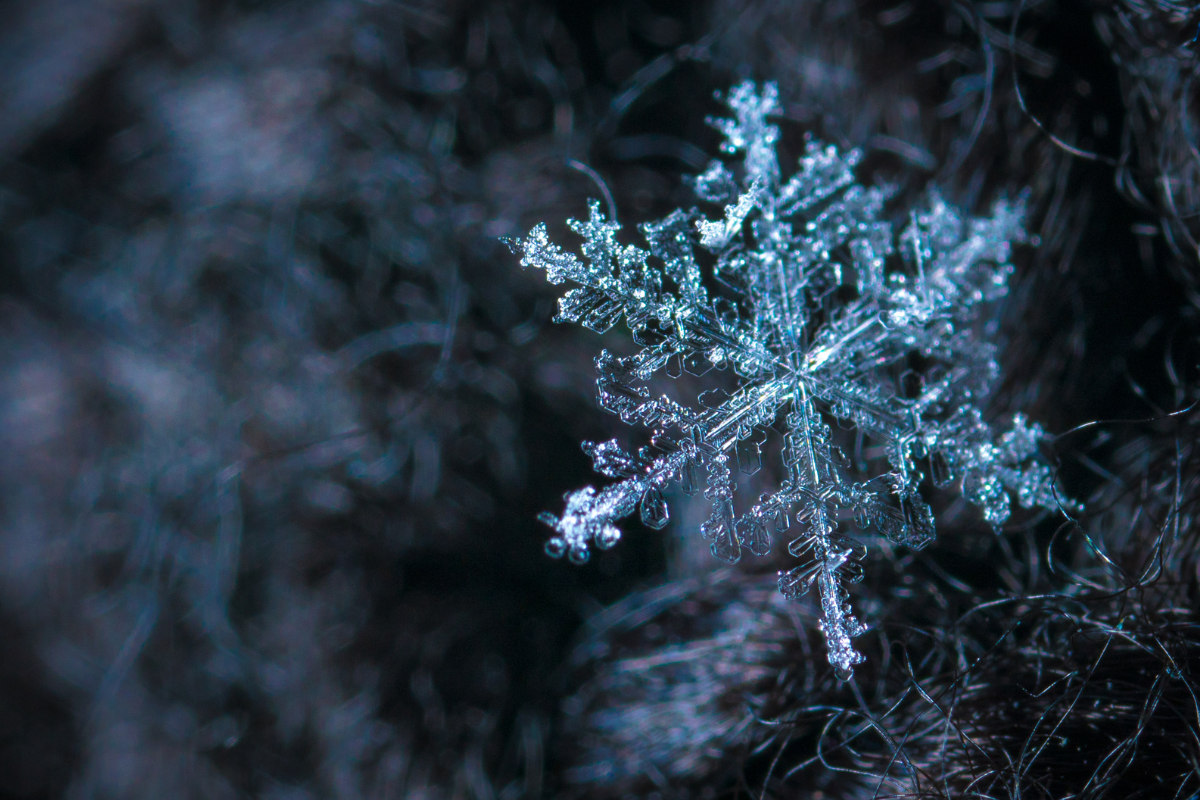US Customer Support
US-based Customer Support
Free US Shipping on Orders Over $100

As winter envelops the landscape in a blanket of white, one of nature's most enchanting phenomena takes center stage: the snowflake. Delicate and intricate, each snowflake is a testament to the complexity and beauty that can emerge from the simplest of elements. What is it that gives snowflakes their unique shapes and patterns? In this article, we delve into the captivating science behind snowflake formation and the various factors that contribute to their mesmerizing diversity

Snowflakes, those mesmerizing, feather-light crystals that dance through the air during winter, owe their existence to the intricate process of crystallization. Formed high up in the Earth's atmosphere, these delicate structures emerge from the transformation of water vapor into ice crystals. The journey begins when water vapor condenses around a tiny dust or pollen particle, forming a nucleus upon which ice crystals can grow. The temperature and humidity levels in the atmosphere play a pivotal role in determining the ultimate form that each snowflake will take.
The shape of a snowflake is determined by a delicate interplay of temperature, humidity, and atmospheric conditions. Crystallization patterns, growth rates, and temperature fluctuations all contribute to the diverse array of snowflake shapes we observe. The intricate branching patterns and hexagonal symmetry arise from the unique arrangement of water molecules as they bind together in the solid state. This process is heavily influenced by the temperature and humidity levels during the crystal's formation, leading to the formation of intricate, symmetrical, and often breathtaking designs

At the heart of every snowflake's intricate structure lies the unique arrangement of water molecules. As water freezes, the molecules form a hexagonal lattice structure, allowing the snowflake to grow outward in a symmetrical pattern. The intricate branching patterns emerge from the specific bonding angles between water molecules, creating the elaborate and unique designs that have fascinated scientists and artists alike for centuries.
Interestingly, even subtle changes in atmospheric conditions can significantly impact the formation of snowflakes. Variations in temperature and humidity levels lead to diverse shapes and sizes, resulting in a kaleidoscope of patterns that adorn the winter landscape. Atmospheric turbulence, wind patterns, and altitude can all influence the growth trajectory of a snowflake, further adding to the diversity and uniqueness of each delicate crystal.

Beyond their scientific significance, snowflakes have captured the human imagination for centuries, inspiring art, literature, and even scientific research. From intricate snowflake photography to the delicate beauty of snowflake-inspired jewelry, their unique and mesmerizing forms continue to captivate people around the world. The symmetrical perfection and fragile nature of snowflakes serve as a reminder of the exquisite balance and complexity found in the natural world.
In the intricate world of snowflake formation, science and art converge to unveil the magic behind these delicate crystals. From their mesmerizing symmetry to the influence of environmental conditions, snowflakes embody the wonders of nature's creative forces. As winter casts its icy spell, take a moment to marvel at the unique beauty of each snowflake. This fleeting masterpiece embodies the elegance and complexity of the natural world.
Want to try making snowflakes at home? Try Innovative Science Polymer Kit for a fun and interesting at home activity suitable for everyone.
